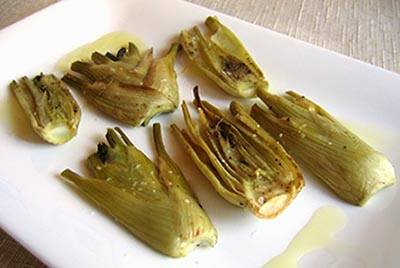 Given that I have spent the last 14 years working with farmers who do everything to avoid using pesticides on their farms, it might come as a surprise to learn that I spent the first years of my career doing public relations for agricultural chemical companies. My dad died the last semester I was in college. As my younger sister had two years to go, I took the first job offer I got two recessions ago.
Given that I have spent the last 14 years working with farmers who do everything to avoid using pesticides on their farms, it might come as a surprise to learn that I spent the first years of my career doing public relations for agricultural chemical companies. My dad died the last semester I was in college. As my younger sister had two years to go, I took the first job offer I got two recessions ago.
At the PR agency we had the Crop Protection Chemicals Reference, a four-inch thick bound volume that contained the complete label of every pesticide registered for use in the United States. As marketing claims for unlabeled pesticide uses are prohibited, sending a press release to legal without first consulting the CPCR resulted in a document that looked like a redacted FOIA request.
It never surprised me to see industrial hemp in the list of weeds that most pesticides, save things like Roundup, paraquat, and 245T (half of Agent Orange), could not control. Cutting hemp out of fields where it was grown decades earlier for rope during WWII helped to fund my college education.
Illinois farmers must remove hemp from their fields as it is classified as a noxious weed. States can add plants to the federal list of noxious weeds, and Illinois added all varieties of hemp/cannabis including those used for rope, cloth, paper, salad oil, soap, paint, cement, animal feed, and insulation; remind me again why we grow corn and soybeans?
According to USDA, noxious weeds are considered to be plants of foreign, not indigenous, origin that “can directly or indirectly injure crops, other useful plants, livestock, poultry, or other interests of agriculture including irrigation, navigation, fish and wildlife resources, or the public health.” Obviously in the case of Illinois, state additions can be more political than environmental.
However, Washington’s reason for adding fennel to its list is environmental. If fennel escapes cultivation, it can crowd out native plants in an ecosystem, potentially crowding out food sources for wildlife.
Fennel, like hemp, is an amazing competitor. You can find it thriving next to parking lots in San Francisco and along rocky roadsides in the Mediterranean. Environmental concerns noted, I’ve always believed that if a plant is that hard to kill then you should be using it, whether it be hemp, purslane, or fennel.
Fennel has been appearing at local farmers markets for the last few years starting in late summer. It has a licorice-anise flavor, but is milder than the ouzo you may have consumed as part of a college bender. The outer leaves of fennel can be tough and fibrous, especially if it has been shipped from California instead of grown locally. For small bulbs that are 2 ½ inches or less in width, cut off the stems, slice the bulb in half vertically, brush it with olive oil, salt, and pepper, and roast at 350 degrees for 40 minutes or until tender. You can use the stems and leaves as a base for grilling fish or Italian sausage.
Fennel also is good raw. Prepare larger bulbs as above, but core them like cabbage. Then slice thinly cross wise. Fennel is a nice compliment to apples, carrots, and beets. You can make a great salad with steamed sliced beets, shaved fennel, and a little crème fraiche or yogurt.
When the weather gets colder, slice the fennel ¼-inch thick and sauté with onions and ¾ to a pound of sliced Italian sausage. Deglaze the pan with a little wine. Then add a small can of diced tomatoes, a pinch of red pepper, salt and black pepper to taste. Cook covered for 10 to 15 minutes for the flavors to meld and serve over regular or whole wheat pasta like penne, orrechiette, or farfalle.








